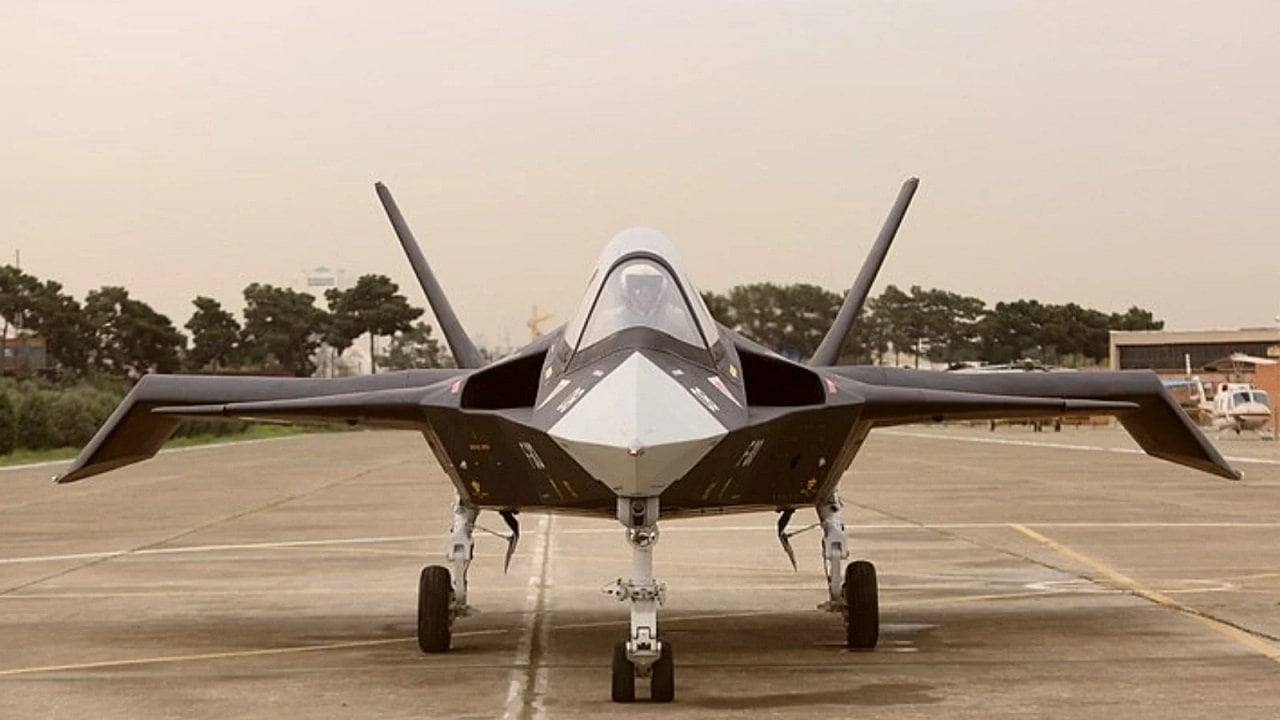Iran Announces Successful Unmanned Flight of Qaher-313 Fighter Jet
Speaking at the 12th Iran International Aerospace Exhibition (Iran Airshow) on Kish Island recently, Managing Director of the Iran Aviation Industries Organization (IAIO), General Afshin Khajefard, announced the successful maiden unmanned flight of the Qaher-313 fighter jet.
(DEFENCE SECURITY ASIA) – Iran has announced that its domestically-produced fighter jet, the Qaher-313 (Conqueror), has successfully conducted its first unmanned flight, marking a significant milestone for the country’s defense and aerospace industries.
Speaking at the 12th Iran International Aerospace Exhibition (Iran Airshow) on Kish Island recently, Managing Director of the Iran Aviation Industries Organization (IAIO), General Afshin Khajefard, announced the successful maiden unmanned flight of the Qaher-313 fighter jet.
The unmanned Qaher aircraft is based on the Qaher-313 fighter jet, which was first unveiled in February 2013.
The jet is capable of Short Take-Off and Landing (STOL) operations.
General Khajefard also highlighted other IAIO initiatives, including the development of domestically-produced jet trainers to ensure self-sufficiency in pilot training without reliance on foreign entities.

He stated that this remains a top priority for the Ministry of Defense in equipping the Armed Forces.
When first introduced to the public in 2013, Iran’s administration at the time boasted that the fifth-generation fighter jet, developed by IAIO, surpassed the capabilities of the United States’ fifth-generation fighter jets, the F-22 “Raptor” and the F-35 “Lightning.”
However, the unveiling of Iran’s so-called fifth-generation fighter jet was met with skepticism and doubt by international military analysts and aviation experts, who dismissed Tehran’s claims of successfully developing such an advanced aircraft.
Analysts believed the “Qaher-313” was nothing more than a mock-up, intended to convey to the Iranian public that the nation possessed the technological capabilities to rival the United States and Western powers in the development of next-generation fighter jets.
Western military experts likened the Iranian fighter jet to a Hollywood movie prop, asserting that it lacked the characteristics necessary to be considered a next-generation fighter.
They argued that even classifying the Qaher-313 as a fourth-generation fighter was inappropriate.
The aircraft’s design and size, they claimed, exhibited significant engineering flaws, particularly in avionics, reinforcing their belief that the Qaher-313 was a propaganda tool for Iran’s administration and military at the time.
Western defense analysts also raised concerns about the aircraft’s cockpit, which they described as overly simplistic, failing to reflect the features of a fifth-generation fighter, and more fitting for a small private aircraft.
Additionally, the Qaher-313’s nose section was deemed too small to house a functional radar system, while the air intakes were considered undersized for a fifth-generation or any modern fighter jet.
The Qaher-313 is designed to carry a variety of armaments, including two 2,000-pound bombs, several smaller smart guided missiles, or at least six air-to-air missiles similar to the PL-12.

The aircraft is reportedly powered by a single engine, potentially a reverse-engineered variant of the General Electric J85 turbojet, which Iran retains from pre-1979 American aircraft in its inventory.
In February 2023, IAIO announced plans to convert the Qaher-313 into an unmanned aerial vehicle (UAV) to meet the operational needs of Iranian military units, with initial deliveries expected by mid-2024.
To date, detailed technical specifications and performance data on the Qaher-313 remain limited, and its operational status remains uncertain. — DSA


